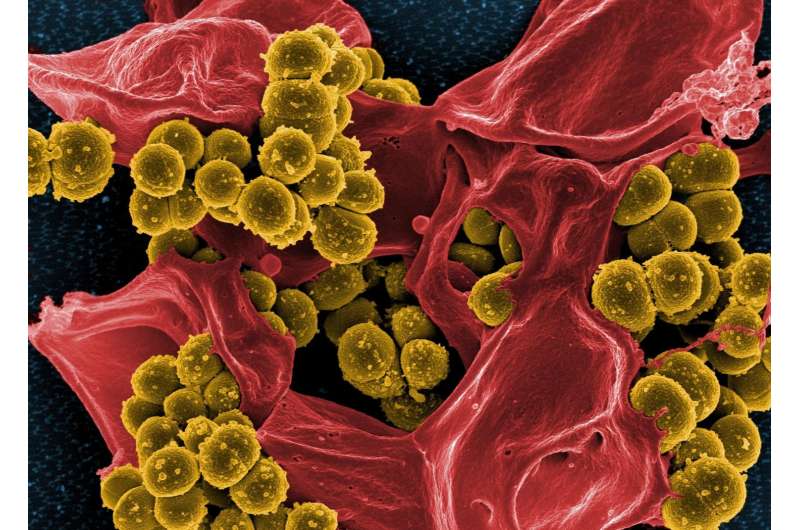New gene variant is even more resistant to hospital antiseptic

A team of investigators has discovered a new, more powerful variant on an antimicrobial resistance gene common among Staphylococcus species. The gene protects the bacteria from an antiseptic compound widely used in healthcare. The team showed that the newly discovered gene occurs in a highly virulent and multi-resistant clone of Staphylococcus epidermidis, found in healthcare settings worldwide. The research is published in Antimicrobial Agents and Chemotherapy, a journal of the American Society for Microbiology.
The researchers conducted a randomized controlled trial of chlorhexidine bathing. Hospitalized patients are sometimes bathed in a solution of chlorhexidine gluconate (CHG), a topical antiseptic, to reduce the spread of infections. S. epidermidis is an important cause of infections in patients with implanted medical devices. Bathing with CHG has been shown to reduce rates of device-associated infections.
The primary goal of the study was to determine whether bathing in CHG reduced the risk of bloodstream infections associated with central venous catheters. The discovery of the new gene variant was an unanticipated result of that study, said coauthor Xuan Qin, Ph.D., D(ABMM), Associate Professor, UW Lab Medicine, the University of Washington School of Medicine.
The investigators obtained isolates of S. epidermidis from the skin of children enrolled in the study. "We obtained the cutaneous bacteria by swabbing the children's skin at the beginning, middle, and end of the study," said coauthor Danielle M. Zerr, MD, MPH, Professor of Pediatric Infectious Diseases, University of Washington, Seattle Children's Hospital. "We tested the susceptibilities of the S. epidermidis we isolated to CHG and commonly used antibiotics."
The investigators then analyzed the isolates using PCR, and another genetic technique called restriction fragment length polymorphism (RFLP) to determine whether they carried an antimicrobial resistance gene common to Staphylococcus species, called qacA. That gene encodes a transmembrane protein that acts as a pump to expel CHG from the bacterium.
Not only did they find the qacA gene; they discovered a new variant of that gene which they dubbed qacA4. The isolates of S. epidermidis with qacA4 were more proficient at excreting CHG than those with qacA, and those without either variant of the gene. In scientific terms, those with qacA4 showed a higher CHG minimum inhibitory concentration (MIC) than those with qacA and those without the gene. (Minimum inhibitory concentration refers to the lowest concentration of an antibiotic that can prevent visible growth a bacterium.)
The difference between QacA and QacA4 proteins amounts to two amino acid substitutions out of 514 amino acids. The investigators speculate that just one of those mutations is responsible for the higher MIC. The substitution in question occurs in a transmembrane segment that lines the CHG binding pocket of the pump. But further study of that question is work for another day.

















